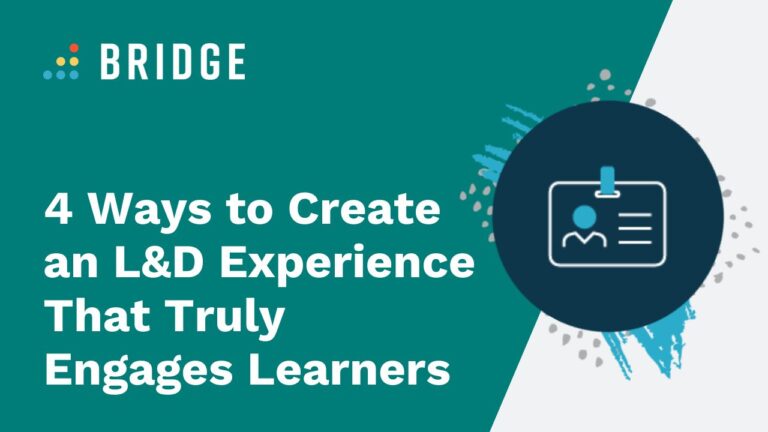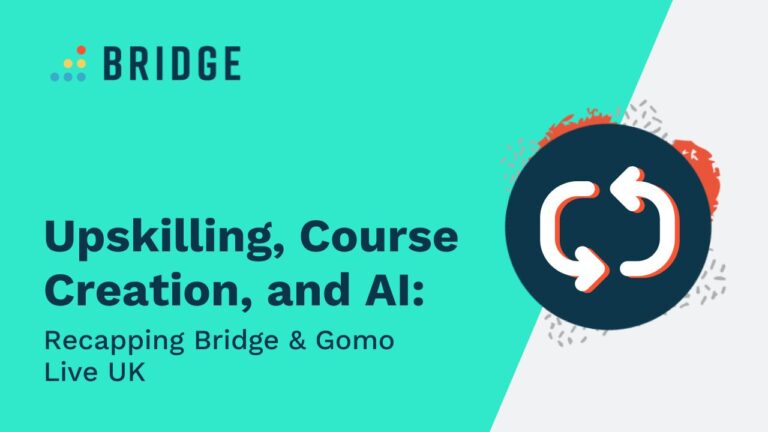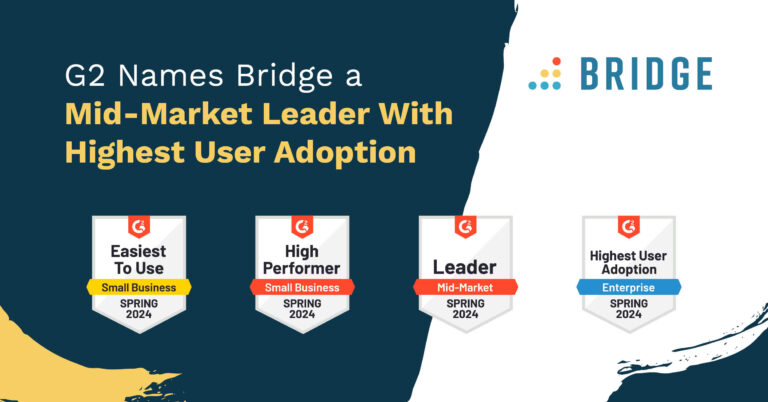Organizations that thrive are those that recognize and value the combined efforts of their workforce and establish a culture of trust, support, and growth.
An engaged workforce is the key to success, and Deloitte research reveals that 79% of execs consider strengthening engagement a top priority in driving business performance.
Creating positive and productive outcomes means building trust with employees, showing them that they’re a priority and that their organization is invested in their growth.
The Link Between Learning and Employee Engagement
Gallup research shows that at the end of 2022, employee engagement levels sank to the lowest in a decade, as people reported a lack of connection and satisfaction with aspects of working life. One of the significant factors that contributed to this slump was an unmet need for opportunities to learn and grow.
Your people want training to develop and learn new skills. What’s more, organizations that give employees access to these opportunities that are tailored to their unique needs are 2.6x more likely to report a positive workplace experience, according to findings from Deloitte. Conversely, when employees aren’t encouraged to advance and grow, their intent to leave increases by over 2x.
When L&D offerings are engaging, personalized to employees’ goals, and tied to a common purpose, you maximize the impact of training.
4 L&D Content Best Practices to Improve Employee Engagement
Engaging your people with training means fine-tuning your content and using the right platforms to enable connection and empower growth. Here are four tips to help you build and reinforce a culture of development.
1) Give Learners a Platform to Share Their Expertise
Within your organization, there’s a depth and breadth of knowledge waiting to be unlocked. A learning management system with the power to create, store, and distribute training that’s specific to your organization and processes is an effective way to share insights that apply to day-to-day activities.
Capturing this collective knowledge enables your people to share and learn from each other, creating a culture of learners who take a proactive approach to their own growth and feed into each other’s development. When resources are easy to search and available on demand, your people can immediately find what they need and apply their new knowledge.
The training materials your people create don’t have to be professional quality—the important thing is that employees relate to content and engage with each other.
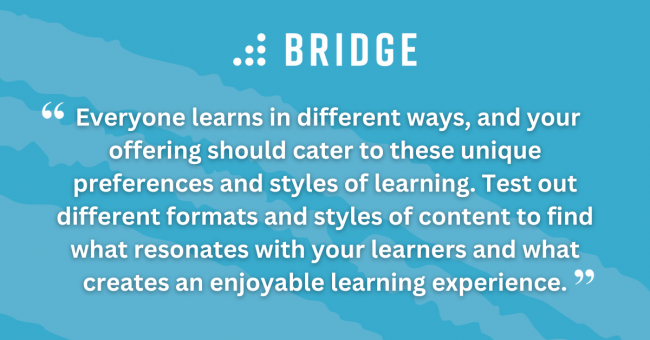
FIND OUT HOW TO KEEP YOUR LEARNERS CONNECTED | ‘Does Your L&D Approach Meet the Needs of Today’s Learner?’
2) Create Content That Accommodates Different Learning Styles
Training that’s intentionally designed, curated, and distributed as part of a journey is more relevant to your audience, resulting in a positive and more engaging experience.
According to RedThread Research, organizations with high performing learning cultures are more likely to consider individual needs when building training programs. They also experiment with twice as many learning formats.
Everyone learns in different ways, and your offering should cater to these unique preferences and styles of learning. Uncovering what best suits your learners requires experimentation and careful listening. You must also be prepared to adapt your approach based on feedback.
Test out different formats and styles of content to find what resonates with your learners and what creates an enjoyable learning experience. Where possible, you should offer training in several forms and optimize content for mobile devices. This way, you give your people choices about when, where, and how to complete training.
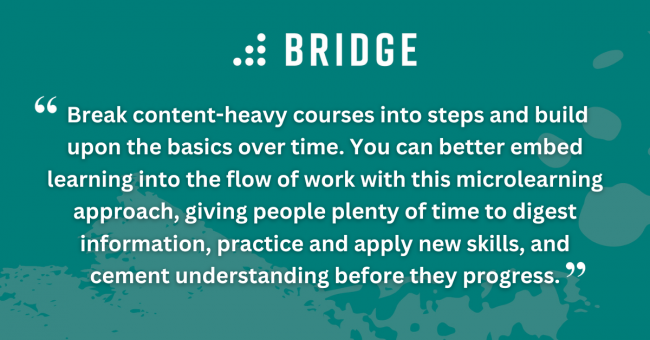
HOW TO CREATE CONTENT THAT ENGAGES LEARNERS | ‘6 Content Curation Best Practices to Maximize the Impact of Your L&D Strategy’
3) Break Courses Down Into Small Chunks
To understand whether your content is engaging, review your current resources and collect your existing data to inform how learners interact with them. For example, if users log onto your learning platform infrequently and complete large chunks in one sitting, it could tell you that too much of the current offering is locked away in lengthy courses that aren’t engaging.
Instead of overloading users with too much information all at once, break content-heavy courses into steps and build upon the basics over time. You can better embed learning into the flow of work with this microlearning approach, giving people plenty of time to digest information, practice and apply new skills, and cement understanding before they progress.
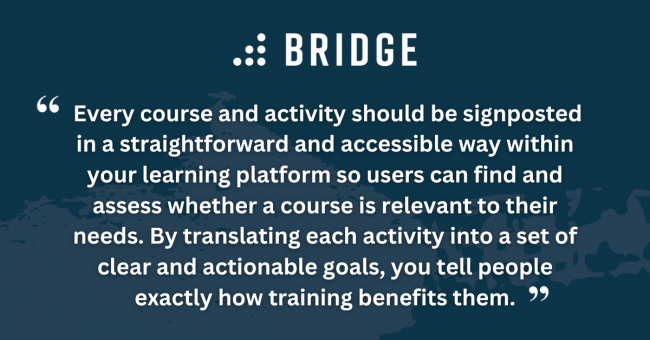
FURTHER READING ABOUT MICROLEARNING | ‘Beating Burnout: Why Microlearning Is a Must for Time-Poor Teams’
4) Think About Learning Goals to Keep Training Relevant
Every course and activity should be signposted in a straightforward and accessible way within your learning platform so users can find and assess whether a course is relevant to their needs.
You must be clear about your purpose at each stage of content creation. Define who you’re creating content for, what skills they’ll learn, and at what point in the journey they’ll gain this information. By translating each activity into a set of clear and actionable goals, you tell people exactly how training benefits them.
Connecting training with performance outcomes also communicates to people how their development contributes to organizational success. A clear set of objectives that connects your people can boost engagement, and when this is based on learning and growth, you create a culture of proactive and empowered learners.
EXPLORE MORE ENGAGEMENT BEST PRACTICES | ‘4 Ways to Fuel Employee Engagement With Skills Development’
Discover More Ways to Engage Your People With L&D
To find more data-driven insights to inform your strategy, download your copy of our ebook, ‘The Powerful Link Between Learning and Employee Engagement.’
